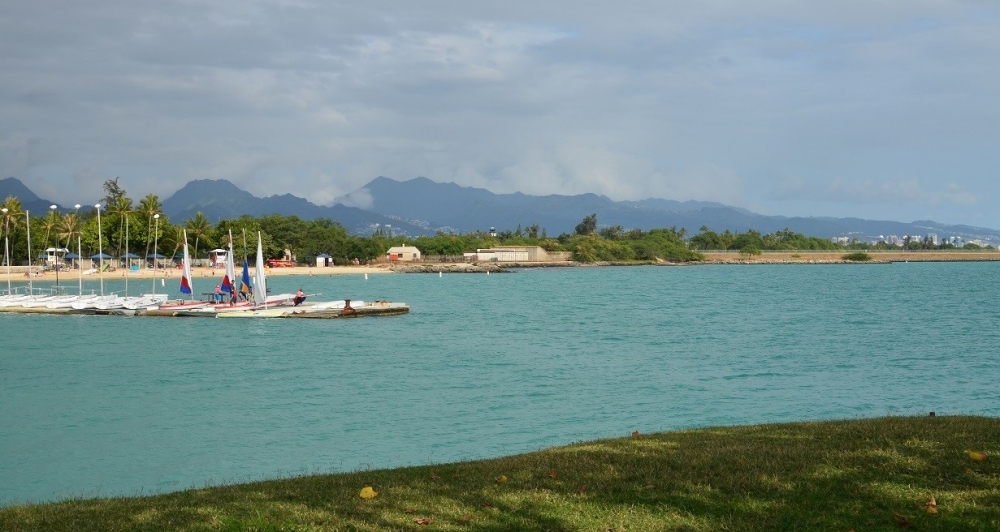
Program Overview
Under the Clean Water Act (CWA), the United States Environmental Protection Agency (EPA) and the State of Hawaii Department of Health (HDOH) establish environmental programs to protect the Nation’s waters. The National Pollutant Discharge Elimination System (NPDES) program was created through the CWA and is implemented through each State. The NPDES program requires all discharges into the waters of the United States to be permitted and comply with receiving water quality standards to protect, maintain, and improve the water quality of our oceans. To capture all discharges from the Navy (except from Shipyard areas which are under a separate NPDES permit), Navy Region Hawaii operates under a comprehensive NPDES Permit for Joint Base Pearl Harbor-Hickam (JBPHH). This Storm Water permit was issued to the Navy Region Hawaii by the HDOH.
The permit applies to Navy Region Hawaii properties including, but not limited to: Pearl Harbor-Hickam main base, Lualualei Annex, Fleet Logistics Center – Pearl Harbor, Naval Facilities Engineering Command Hawaii NAVFAC Hawaii, Naval Inactive Ships Maintenance Facility, and Naval Computer and Telecommunications Area Master Station Pacific at the Wahiawa Annex. Although the permit doesn’t include all Navy areas, such as the Pacific Missile Range Facility at Barking Sands, Kauai, procedures are followed to prevent water pollution.
The Storm Water Management Program consists of the following programs:
- Public Education and Outreach
- Public Involvement and Participation
- Illicit Discharge Detection and Elimination Program
- Construction Site Management Program
- Post-Construction Storm Water Management Program
- System Maintenance and Pollution Prevention
Why are we concerned about storm water?
Storm water runoff occurs when water from rainfall flows over the ground, through the storm drain system, and into a water body such as a stream, river, wetland or ocean. Storm water can accumulate debris, chemicals, dirt, and other pollutants and transport them into a storm drain system or directly to a water body. Anything that enters a storm drain system can be discharged untreated into the water bodies we use for recreational activities including swimming, surfing, and fishing.
How do we minimize storm water pollution?
The key to storm water pollution prevention is to prevent pollutants from coming into contact with storm water and remove pollutants from storm water when full prevention is not possible using Best Management Practices (BMPs). BMPs can be structural and procedural systems.
Resources:
Contacts:
To report a storm water illicit discharge, call the Installation Environmental Compliance Office: (808) 449-3184.
For questions regarding the storm water program or to request a copy of the Navy Region Hawaii’s current Storm Water Management Plan, NPDES Permit, or Storm Water Annual Report, call the NAVFAC Hawaii Environmental office: (808) 471-4809 or email our Public Affairs Office at navfachawaiipa@gmail.com.
NRH Storm Water Management Plan June 2022